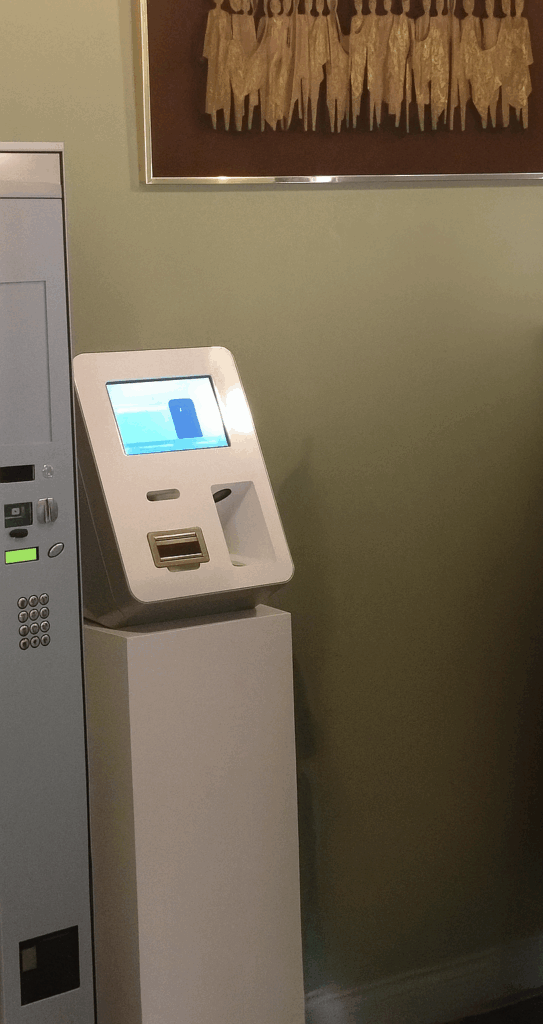It is fair to say Bitcoin has undergone an evolution from a novel, fringe, low-scrutiny means of transacting and transferring funds to the mainstream debit card, digital gold, and ETF asset it is today. It’s often easy to forget Bitcoin’s journey and why it is no longer wise for use by the fringes of society or the criminal underbelly. So, let’s explore the historical marks of criminal activity in Bitcoin over the years, although it now stands beyond reproach, and only a “Baka” (Japanese for fool) would seek to launder funds through Bitcoin given its public blockchain and less-than-ideal off-ramping potential.

Bitcoin ATMs
Bitcoin ATMs may have started out as a novelty and access point for people wanting to involve themselves in the early days of the crypto revolution. I remember back in the early days of Digital Jersey, there was a Bitcoin ATM pride of place, as Digital Jersey has always been keen to promote new, innovative solutions.
Do They Still Exist?
Yes, they are rife, in fact, in New South Wales, with Australia having the third largest concentration of Bitcoin ATMs in the world, estimated at an impressive 1,395, with 224 locations in New South Wales alone. Although these ATMs are a bit of a grey area, they still exist, and I’m sure for respectable individuals like content creators or YouTubers, they serve as a novel way to access the crypto market. But with exchanges now, and us clearly into the Web2-approaching-Web3 era, and in the mainstream with apps, you do have to wonder what purpose a physical ATM may serve? The Reserve Bank of Australia (RBA) reported that cash payments dropped to around 13% of consumer transactions nationwide by 2022. It is estimated that cash makes up under 15% of transactions in Australia. It would appear Bitcoin ATMs may be quite redundant, but I suppose there is always a fictional example of some bartender called Liam wanting to cash out his tips into Bitcoin.
Ties to Illicit Activity
But Liam, the fictional stout-pouring, swashbuckling bartender aside, the existence of these ATMs’ continued operation likely lies in their servicing of less legitimate parts of the economy and money laundering. A 2024 case by AUSTRAC explicitly linked these ATMs to money laundering, with an estimated 1 in 10 transactions tied to illicit activity. But that’s mostly in the past, and it’s likely concentrated groups of bad actors in New South Wales utilising those 224 Bitcoin ATMs won’t last long, with the ratio of good actors versus bad actors on the decline. Soon enough, using a Bitcoin ATM will be like getting a skull and crossbones tattooed on your face, not a particularly wise decision unless you are planning to become a Somalian pirate.
Bitcoin Is No Longer a Tool of the Illicit
Bitcoin’s journey from murky ATMs to respectable ETFs reflects its growing legitimacy. Today, Bitcoin is traded on regulated exchanges, held in institutional portfolios, and offered as an ETF, positioning it as a mainstream asset. Its public blockchain ensures transparency, making it an impractical choice for criminals. Regulatory bodies like AUSTRAC and advancements in blockchain analytics, like Chainalysis, have further diminished Bitcoin’s appeal for illicit use. Their relevance is waning in a cashless, regulated world and serves as a giant red flag for where to put the “bugs” for intelligence operatives.
Bitcoin Today ?
Bitcoin today is a highly professionalised industry, with the likes of BlackRock having substantial Bitcoin ETFs through iShares. This underscores how new monetary systems will, in the beginning, be vulnerable to bad actors, and as such, big firms become inherently cautious about touching them. However, in time, a more efficient method will gain the traction it needs, and regulation will close in on the loopholes for the criminal Sauls out there. In conclusion, Bitcoin’s evolution into a professionalised asset underscores its shift from the fringes to the financial mainstream, leaving its criminal associations largely in the past.
